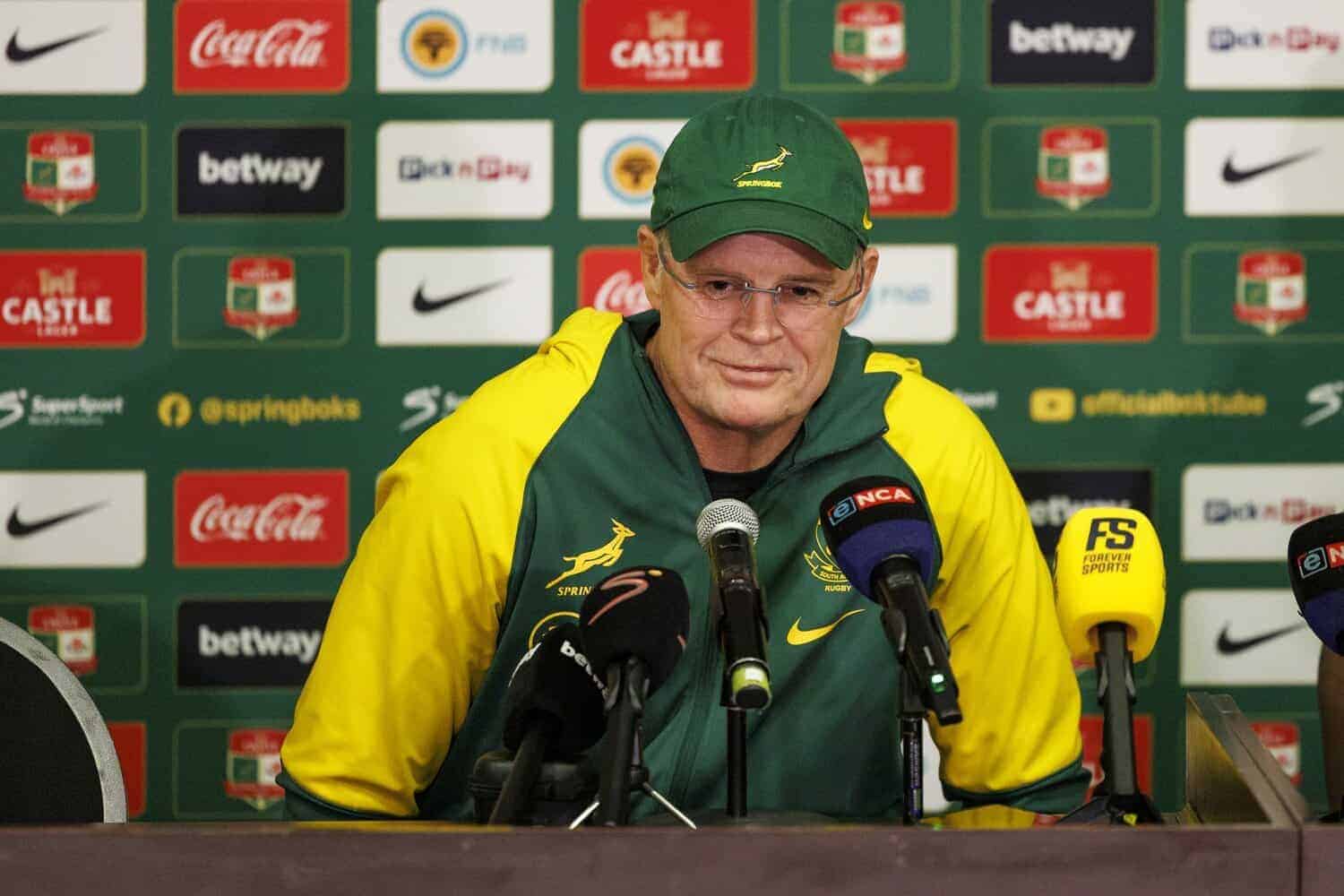In the world of rugby, Rassie Erasmus stands out as a visionary coach, pioneering new strategies and pushing the boundaries of traditional play. His tenure with the South African national team, the Springboks, has been marked by a blend of tactical genius and innovative play that has captivated both fans and analysts alike.
Springbok innovations under Rassie’s leadership
Erasmus’s approach has consistently been to challenge the status quo and keep opponents guessing. This season has seen a string of victories for the Springboks, with decisive wins against the Barbarians, Italy, and Georgia. Each of these matches featured unique strategies that highlighted Erasmus’s creative coaching style.
One of the standout moments was when traditional centre André Esterhuizen took on a hybrid role in the game against the Barbarians. In an unprecedented move, Esterhuizen played as a flank during attacks but returned to his usual centre position for defense. Such innovative use of players not only showcases Erasmus’s deep understanding of individual strengths but also disrupts expectations in the rugby world.
Creative tactics and squad rotation
Continuing with his tradition of surprises, Erasmus introduced the concept of a short kick-off against Italy. Although later deemed an intentional infringement by World Rugby, it demonstrated his willingness to experiment and adapt. The midfield “fake lineout” maul in open play added another layer to their tactical repertoire, resulting in a spectacular try.
The rotation of players is another hallmark of Erasmus’s leadership. Over four games, 48 players were fielded, a testament to the depth and versatility cultivated under his management. The inclusion of uncapped players against Georgia and the positioning of Cobus Wiese, inexperienced in the No 8 role, highlights a commitment to exploring new combinations and maintaining freshness in the squad.
The strategic dilemma of the Springbok flyhalf
Central to the Springboks’ strategy this season is the flyhalf position. Erasmus has taken the unconventional route of not designating a first-choice flyhalf. Instead, he leverages the unique strengths of each player—Sacha Feinberg-Mngomezulu, Manie Libbok, and Handré Pollard—based on the opposition and tactical needs of each match.
This flexibility, Erasmus believes, makes the Springboks less predictable and harder to prepare against. Much like a chess grandmaster, he considers the specifics of each game, employing the player’s strengths accordingly. This nuanced handling of personnel illustrates his capacity to harness diversity within the squad to create a formidable force on the field.
The road ahead for the Springboks
As the Rugby Championship looms, Erasmus’s innovations promise to keep the excitement alive. The strategic shifts and the continuous evolution of roles signal a commitment to retaining the Springboks’ position as defending champions. With games against Australia, New Zealand, and Argentina on the horizon, fans can expect more surprises not just in gameplay but in player selection and positioning as well.
Amidst all these tactical changes, one theme remains constant—Rassie Erasmus’s unwavering dedication to innovation. He openly acknowledges the importance of staying ahead of the competition by adapting and reshaping the team’s approach. This not only prepares the Springboks for immediate challenges but also sets a foundation for future success, including strategic planning towards the 2027 World Cup.
Conclusion
Rassie Erasmus has undoubtedly injected a dynamic energy into the Springboks, transforming the team into a hub of innovation and unpredictability. His strategic acumen and willingness to experiment with new ideas solidify his place as a leading figure in modern rugby coaching, proving yet again that in the high-stakes world of international rugby, sometimes the best defense is an unexpected offense.






